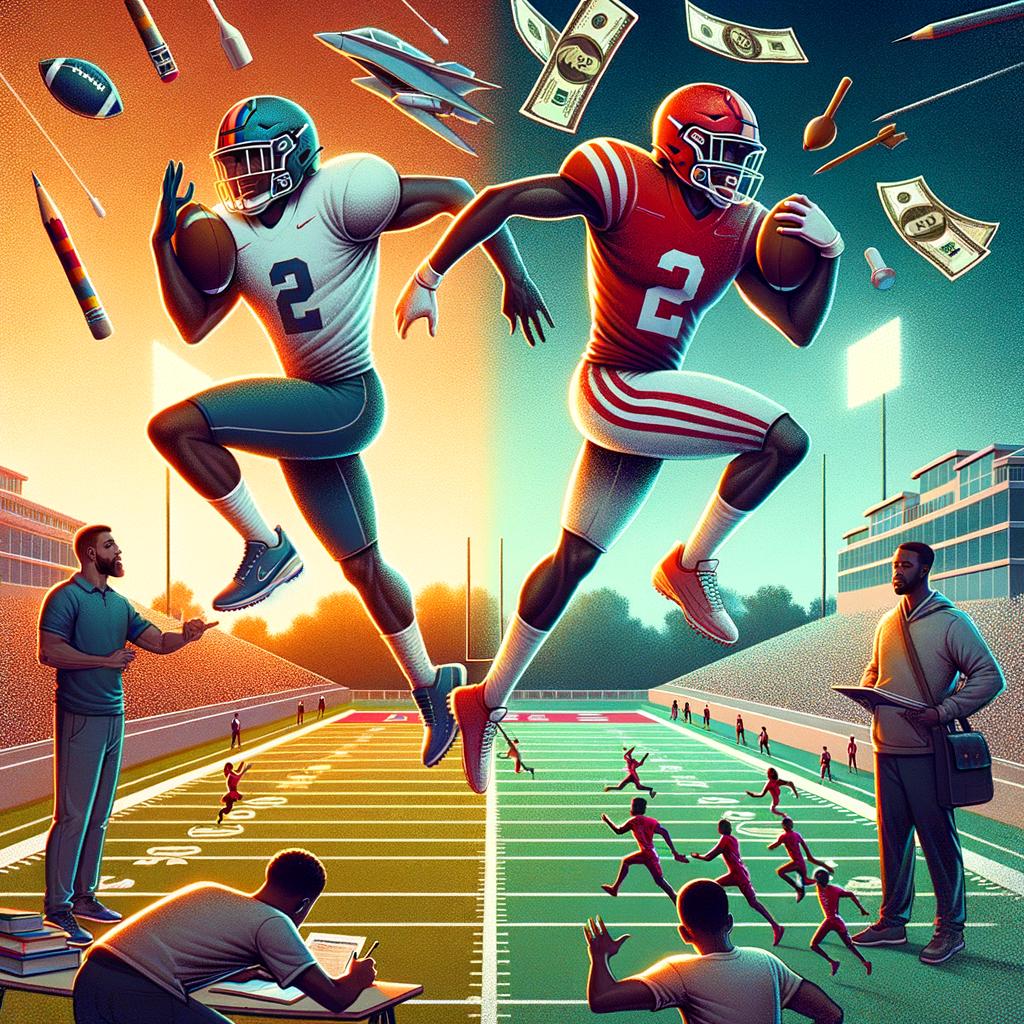America’s Sports Landscape: The Impact of College Athlete Pay
In the dynamic world of American sports, a fundamental shift is underway, drawing the attention of athletes, fans, and policymakers alike: the contentious debate over college athlete pay. For decades, collegiate sports have been marred by an exploitative model that leaves student-athletes navigating a complex landscape of rigorous training and competition while receiving limited financial support, often overshadowed by the multi-billion dollar industry surrounding them. However, recent legislative changes and landmark rulings have ignited a revolution, allowing these young athletes to monetize their names, images, and likenesses (NIL). This transformative moment has broader implications for the entire sports ecosystem, challenging long-held assumptions about amateurism and reshaping the relationship between educational institutions, athletic programs, and the individuals who bring them to life. As we explore the evolving nature of college athlete compensation, it’s essential to consider not only the immediate benefits to the athletes themselves but also the long-term effects on recruitment, equity, and the integrity of collegiate athletics. The conversation surrounding college athlete pay is not merely about financial gain; it is a call to recognize their contributions, advocate for fairness, and redefine the future of American sports.
The recent changes in college athlete compensation are set to redefine the financial ecosystem of university sports programs across the nation. As institutions navigate this new landscape, they must consider the broader economic ripple effects that could unfold. Several implications include:
- Increased Revenue Streams: Universities may witness heightened interest from sponsors and advertisers seeking to capitalize on the increased visibility of paid student-athletes.
- Resource Allocation: Allocating funds toward athlete compensation could limit financial support for non-revenue sports, creating disparities within athletic departments.
- Enhanced Recruitment Competition: The ability to offer compensation may make certain programs more attractive to top-tier recruits, leading to intensified competition.
Balancing fair pay with the integrity of college sports requires innovative strategies from university administrations. Some potential approaches include:
- Establishing Transparent Compensation Models: Universities can devise clear guidelines for athlete compensation that ensure equity and transparency.
- Creating Educational Programs: Institutions can implement financial literacy education for athletes to manage their newfound earnings responsibly.
- Maintaining Amateur Status Frameworks: Schools must strive to preserve the essence of college athletics by safeguarding the amateur nature of less lucrative sports.
| Impact Category | Potential Outcomes |
|---|---|
| Recruitment | Higher caliber athletes flock to programs offering compensation |
| Sponsorships | Increased corporate partnerships driven by athlete visibility |
| Non-revenue Sports | Funding cuts could threaten the existence of these programs |
Key Takeaways
the evolving landscape of college athletics represents a pivotal shift not only for student-athletes but also for the entire sports ecosystem in America. By recognizing the rights of these young athletes to receive fair compensation, we open the door to a more equitable system that acknowledges the immense contributions they make to their schools and to the revenue-generating powers of collegiate sports. This change, while met with challenges and opposition, promises to enhance the integrity of college athletics, promote financial security for athletes, and ultimately enrich the experience for fans and communities alike.
As stakeholders—fans, administrators, policymakers, and athletes—navigate this new terrain, it is crucial to advocate for a balanced approach that prioritizes the well-being of student-athletes while preserving the spirit of competition and education. Embracing this new era of college athlete pay not only honors the dedication and hard work of these young men and women but also reaffirms the values of fairness and opportunity that lie at the heart of sports. As we look to the future, it is essential to engage in ongoing discussions and reforms that will shape a more just and sustainable athletic framework, ensuring that every individual who contributes to the spectacle of college sports is rightfully acknowledged and compensated.

Leave a Reply